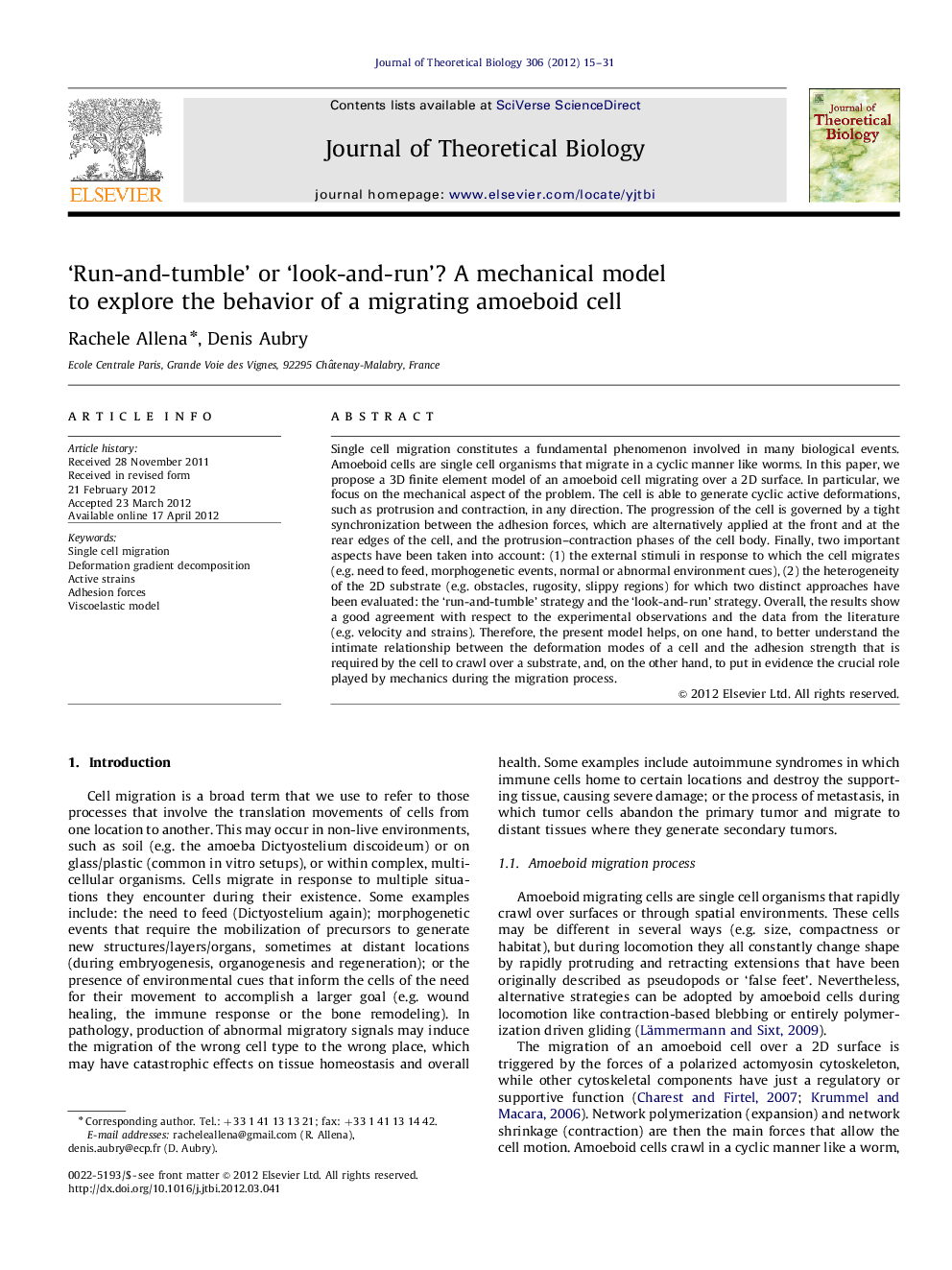| Article ID | Journal | Published Year | Pages | File Type |
|---|---|---|---|---|
| 4496664 | Journal of Theoretical Biology | 2012 | 17 Pages |
Single cell migration constitutes a fundamental phenomenon involved in many biological events. Amoeboid cells are single cell organisms that migrate in a cyclic manner like worms. In this paper, we propose a 3D finite element model of an amoeboid cell migrating over a 2D surface. In particular, we focus on the mechanical aspect of the problem. The cell is able to generate cyclic active deformations, such as protrusion and contraction, in any direction. The progression of the cell is governed by a tight synchronization between the adhesion forces, which are alternatively applied at the front and at the rear edges of the cell, and the protrusion–contraction phases of the cell body. Finally, two important aspects have been taken into account: (1) the external stimuli in response to which the cell migrates (e.g. need to feed, morphogenetic events, normal or abnormal environment cues), (2) the heterogeneity of the 2D substrate (e.g. obstacles, rugosity, slippy regions) for which two distinct approaches have been evaluated: the ‘run-and-tumble’ strategy and the ‘look-and-run’ strategy. Overall, the results show a good agreement with respect to the experimental observations and the data from the literature (e.g. velocity and strains). Therefore, the present model helps, on one hand, to better understand the intimate relationship between the deformation modes of a cell and the adhesion strength that is required by the cell to crawl over a substrate, and, on the other hand, to put in evidence the crucial role played by mechanics during the migration process.
► We present a viscoelastic and continuum finite element model of an amoeboid cell migrating over a 2D surface. ► We focus on the mechanical aspects of the biological phenomenon. ► We show that a synchronization between the protrusion/contraction phases and the adhesion forces is essential. ► The external stimuli in response to which the cell migrates have been taken into account. ► Furthermore, the heterogeneity of the substrate has been described by using two different approaches: the ‘run-and-tumb’ and the ‘look-and-run’ strategies.
